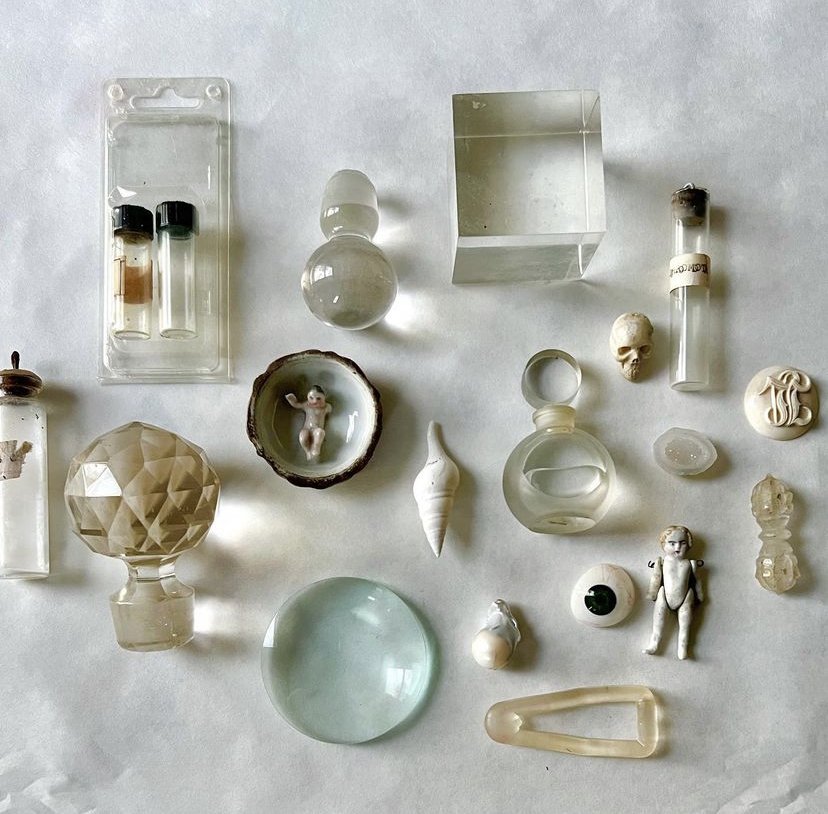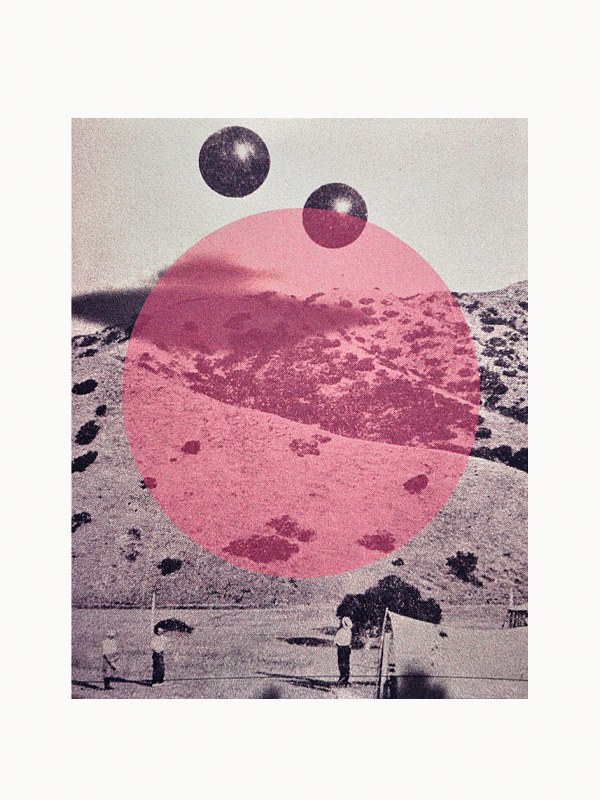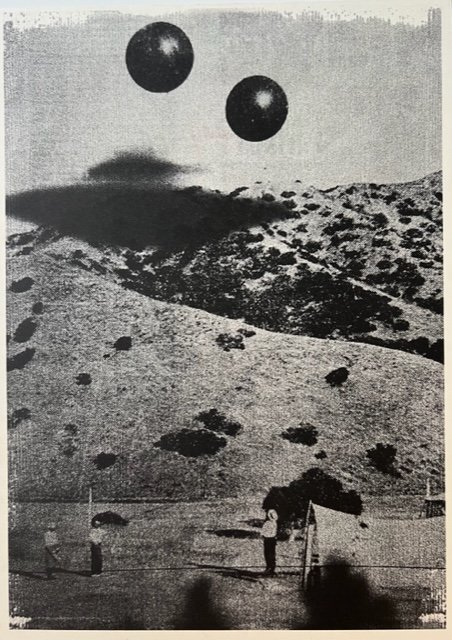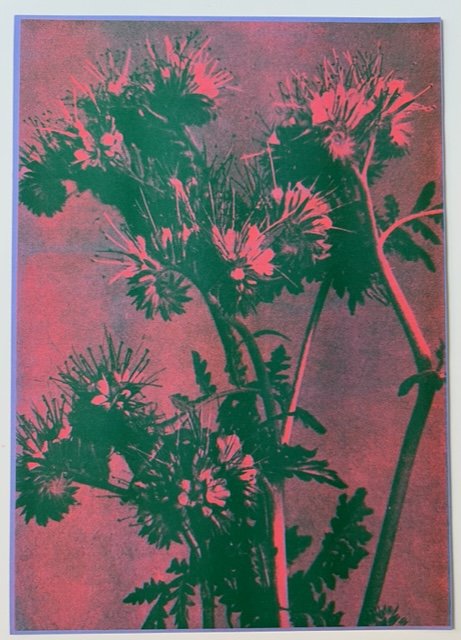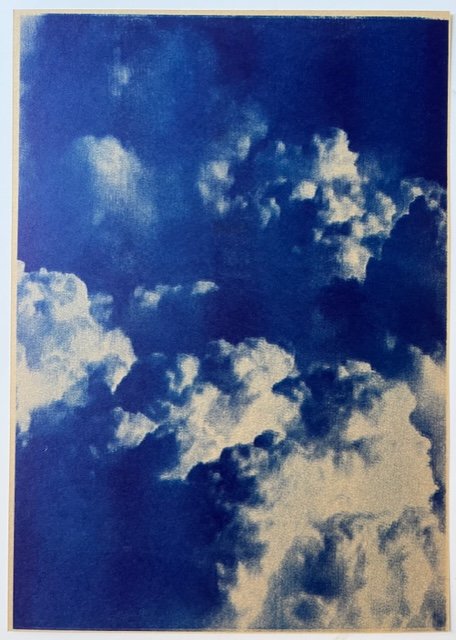A Conversation with Julie Wolfe
Julie Wolfe is a Washington DC based artist known for her grand abstract paintings, sketches on book pages, artists books and site specific installations. Her artistic approach involves collecting images and data to explore the world around us, with the hope of leading the viewer through vibrant arrays of color, form, and language that often serve as markers of time. We spoke with Julie who shares about her creative upbringing, artistic process and new book, Apophenia.
When did you know you wanted to be an artist?
I definitely knew it right when I was younger. I think a lot of it had to do with being in places where I had the opportunity to make things sculpturally and with nature. [I used] whatever was at hand, and I always got such satisfaction out of that. It was a confidence builder.
My parents were supportive and my dad tinkered with a lot of things himself, so I had the tools [to create]. My mom would sign me up for art camp and all that. So, as I was getting a reaction to my work, I thought, maybe I'll be an artist.
Who or what has had the biggest influence on your work and has that changed over time?
Early on and into adulthood, I think I've always been really interested in objects and collecting.
When I was younger, I would collect all kinds of things and on into adulthood. We lived in California so I collected many different things, going to all the flea markets in LA every weekend. It's clear the main thing that I've been always drawn to is collecting things and positioning, grouping and arranging them and seeing how they work together. It's sort of indicative of how I work in series with artwork now.
And also, my dad was a huge storyteller. He told me a lot of stories [and now] I love to tell stories myself, whether they're true or not, we don't know. I also had an interest in dreams and recording/writing about them.
How has living in DC impacted your art work vs. living in LA?
I can't even say enough about the difference between the East Coast and the West Coast. When you go from Laguna Beach, CA to Washington DC it's two completely different cultures. It was quite an adjustment for me and my family but I'm glad that we made the choice to do it.
I feel really fortunate that we were able to live on the beach and then in Washington DC on Capitol Hill. It's just a different vibe (DC), it's very high stress. It's competitive and much more formal…It's a beautiful international city and that was another thing we wanted. We loved Laguna Beach and at the time my girls were young and we were on the beach all the time. It was like Utopia, but we also wanted to live in a more international place to learn about different people and different languages, and to understand what's going on in different parts of the world.
So [the move] did affect my work. I think opportunities came up here that I wouldn't have had on the West Coast with different programs related to the government, [specifically] the State Department has the Art in Embassy. So now, I do a lot of work for exchange programs in different countries. I think my work became a bit more socially conscious and less representational. I think my work has gently moved more into the conceptual range in making large installations. Whereas in Laguna Beach it was more geared towards publicly perceived beauty.
What inspired the idea to create your book Apophenia?
It's been really important for folks to come to my studio (which is in our house) and see the environment that I work in. [They see] the objects around me and my creative process in context with their surroundings and collections. I have people tell me that when they come [to my studio], they understand my work so much better.
I thought in a very literal way like, “What's in your studio, why do we hold on to these objects? How did they turn up in our work? And how do they influence our practice?” The book started off like that but at the same time, I had published only very small editions and my work was not getting the access that I wanted it to. So I thought, “I'm gonna go a little bigger.” I started working with Pan and the Dream and [learning about] the business of publishing. My first book, Apophenia, is a conglomeration of these objects in my studio and the artwork that comes out of that [as well as work from] the smaller edition books that I've made in the past.
It’s a whole story about all those things and how they go together with super common ideas throughout. I wanted my work to be accessible and I felt like my artwork wasn't always accessible to everybody. That's always been a concern and with books, people can have and hold the artwork. I love that idea.
I want to spread the books around the world and then when I'm gone, that'll be my legacy.
What was the creative process for each image in Apophenia like?
I'll take images and burn a film and screen print those over existing book pages. That's just one process but it's what I call super imposition: where you layer all these things. You can sort of see a backstory from each because there's images behind the work that's in the foreground. It goes through a lot of generations, because I'm trying to get good quality images and screen prints.
There's definitely a lot going on [within each image]. … I don't ever want my images or the artwork to look too precious and so it's kind of fun to be in that realm where you don't have to pay attention to that aspect.
How did you choose the name for the book, Apophenia?
It's funny because I wasn't aware of this word. It wasn't in my vocabulary and I work with a writer that sometimes helps me to articulate ideas, and I learned the word from her. But [the word] apophenia, relates to all of my work. To me, it's taking two seemingly different ideas and finding a meaningful connection.
[In the book], it can occur on facing pages, between the object and a painting, or it can be an image of a cloud and seeing a face in it. It’s an umbrella word that related and resonated with me. It's a plus that it’s a really beautiful word too.
Eyes, birds, books, and outer space seem like recurring symbols throughout the book. Why did you choose to highlight these subjects and how are they meaningful to you?
These are all [things] part of my world. Over time, I've done different projects around these ideas. Eyes have been an ongoing project where I document and photograph the eyes of mostly female artists, poets, musicians, dancers and creative people that I know or that I meet when I'm traveling.
The eye is a symbol of that person, their uniqueness and individuality. When you put all of these together, you have a sort of collective consciousness of different ideas and perspectives.
With outer space, I think of this expanding universe. To me, it symbolizes possibility or journeys or again this idea of collective consciousness because [outer space] belongs to everyone.
And then birds, to me, almost seem like a human spirit. I have always loved birds. In California, I had lots of different types of birds and we would hang their cages in the garden. I also like to make them into hybrid creatures whether they're some sort of shape or they have [human] eyes.
Outside of art, what inspires you?
Travel is one of the main things that inspires me. I like to put myself in situations, that make me a little uncomfortable or that are a challenge. I always feel like it manifests itself in my work, when I go to other places, meet other people and have new conversations.
So something that inspires me as a human being would be exploration and experimentation, also meditation in my daily life.
What do you wish to communicate through your work?
I like the idea of guiding [the viewer] through complex systems of color, form, text and random image association processes that pose questions for them, questions about their inner world and their perception of the world.
I try to make work with questions, but without fixed answers. There's point A and point B, but I like viewers to draw their own conclusion with the work. I also want to inspire wonder with dream imagery.
What are the three things you always travel with?
My computer, headphones and a book, (not necessarily like a big, heavy reading book, but something that is inspiring me, that might relate to where I'm going).
What is currently on your bookshelf?
A lot of my books are art books. I have a new one about Sheila Hicks. It's about her weaving and the construction of it is amazing. The book itself is a piece of art.
Also, I just got a book of the work of Edith Dekyndt. Layers of Reality is another cool book [on my bookshelf]. It's about synesthesia. The cover and everything about it is really interesting.

